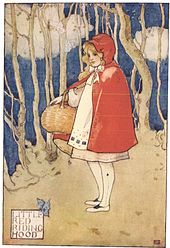
 Too easy? We’ll see.
Too easy? We’ll see.
I’m going to sound like a negative person, which is absolutely the case for me when it comes to business. Business transactions should be emotionally neutral, but it seems like women always want to focus on the positive, a concept that always leads to disappointment. Why? Because business is a practice, without a heart, a soul and most certainly, without ethics.
The need to process the good from it in order to make it work is a woman-made concept, which may have evolved from years in the secretarial pools. So it is disconcerting to see gender-focused bestsellers such as, “Nice Girls Don’t Get the Corner Office: 101 Unconscious Mistakes Women Make That Sabotage Their Careers,” by Lois P. Frankel or “She Wins, You Win: The Most Important Rule Every Businesswoman Need to Know” by Gail Evans.
My self-esteem plummeted after reading the title of Frankel’s book. I could have over 100 unconscious mistakes that sabotage my career! Evans’ book suggests that there is a “rule” for businesswoman. Women need to stop listening to people who tell them about rules. We’re more than just 51 percent of the population. According to WomenMovingMillions.org: Women represent 51% of the nations PhDs; 51% of business school applicants; 67% of college graduates; and more than 70% of 2012 Valedictorians in the U.S. We should be making the rules, our own personal ones.
Women read these books because they don’t understand why they haven’t moved up the corporate ladder. I’ve been holding on to a secret for a while and I’m going to reveal it now after more than two decades in the workforce. Ready?
It’s not you. It’s the culture of American business.
There you go, my big reveal after decades of research – you success in business is dependent on 1)your education – a degree from Harvard is a ticket anywhere – 2) your network – it is who you know 3) your bank account – can you finance your own business 4) your ability to be asexual – every successful business woman I have every seen is  emotional neutral in meetings. Being positive is a sign of weakness. An aloof presence is difficult to read, making others fearful and uncomfortable of the individual. This is the type of person women should strive to be. The less others in business know about you, the more you can be protected against attacks and, if you are a woman, expect to be ambushed at one time or other in your career.
emotional neutral in meetings. Being positive is a sign of weakness. An aloof presence is difficult to read, making others fearful and uncomfortable of the individual. This is the type of person women should strive to be. The less others in business know about you, the more you can be protected against attacks and, if you are a woman, expect to be ambushed at one time or other in your career.
Little Red Riding Hood is the best example of American Culture attitudes toward women and why little has changed. We’ll use the original story from 1697 by Charles Perrault.
Little Red Riding Hood – Women
Her Mother – Traditional attitudes toward women
The basket of food – Little Red Riding Hood’s education, experience, talents
Grandma – The workplace
Wolf – Negative gender attitudes toward women, gender biases, fear, anger
Little Red Riding Hood departs her home and heads out to her grandmother’s house (the workplace) with her basket of goodies (college degree and experience). As she does this, her mother insists she stay on the path that has been carved into the woods, no deviations. Meanwhile, the wolf spies her walking into the wood, runs ahead to place the glass ceiling over the cottage…oh wait that’s another story. He does get to Grandmother’s house first, eats her, essentially gobbling up the workplace.
When Little Red Riding Hood enters the cottage, she puts down her basket (forgets her degree and takes a low paying job because that’s all she can get) the wolf smiles and tells her she smells good, them kills her and swallows her up. There is no hunter or woodcutter to save her. The end.
—-
The Moral of the Story:
It’s time to get out of the stomach of the wolf.
Facts
In February 2010, women accounted for 49.8 percent of the U.S. online population, but made up 57.9 percent of all non-travel buyers, made 61.1 percent of online purchases and accounted for 58.2 percent of online dollars. – Forbes 2012
According to the U.S. Census Bureau, women oversee over 80% of consumer spending, or about $5 trillion dollars annually. – U.S. Census Bureau
